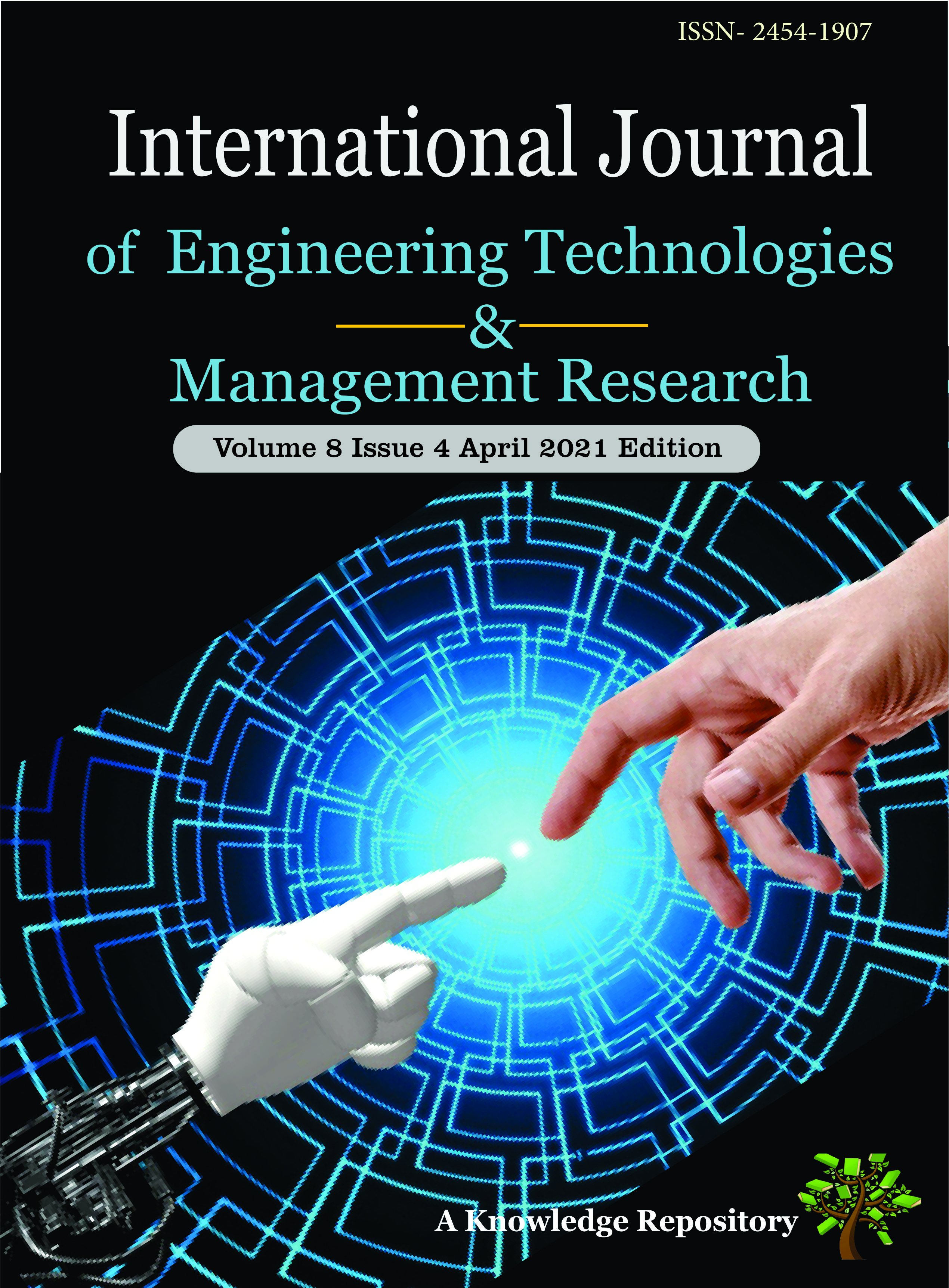A STUDY OF FRACTAL GEOMETRY IN WIRELESS SENSOR NETWORKS
DOI:
https://doi.org/10.29121/ijetmr.v8.i4.2021.925Keywords:
Wireless Sensor Network, Fractal Geometry, Node-Gosper Curves, Moore Curves, LocalizationAbstract
Fractal geometry is a subject that studies non-integer dimensional figures. Most of the fractal geometry figures have a nested or recursive structure. This paper attempts to apply the nested or recursive structure characteristics of fractal geometry to wireless sensor networks. We selected two filling curves, Node-Gosper and Moore, as our research subjects. Node-Gosper Curve is a curve based on node-replacement with a fractal dimension of two. Its first-order graph consists of seven basic line segments. When the hierarchy becomes larger, it can be filled with a hexagonal-like shape. To allow the mobile anchor node of wireless sensor networks to walk along this curve, the number of levels of the Node-Gosper Curve can be adjusted according to parameters such as the sensing area and transmission range. Many space-filling curves have the common shortcoming that they cannot loop on their own, that is, the starting point and the end point are not close, which will cause the mobile anchor node to use extra paths from the end point back to the starting point. The Moore curve has a self-loop, i.e., the starting point and the ending point are almost at the same position. This paper applies Moore curve to the path planning of the mobile anchor node. We can use this path to traverse the entire sensing area and stay in the central point of each square cluster to collect the information of the nodes where the events occurred. The self-loop characteristic of the Moore curve is expected to reach each sensor to collect data faster than other space filling curves, that is, the transmission latency of the sensor traversal will be reduced
Downloads
References
You-Chiun Wang, Chun-Chi Hu, and Yu-Chee Tseng, Introduction to wireless sensor networks, Communication Magazine, vol. 116, 2003 (in Chinese)
C.-C. Chen and S.-B. Wang, “Node-gosper curve-based unknown sensor localization using single mobile anchor in wireless sensor networks,” International Journal of Distributed Sensor Networks, vol. 7, p. 13, 2016. DOI: https://doi.org/10.1177/155014775780101
V. Uher, P. Gajdoš and V. Snášel, "Proposal of Effective Orthogonal and Hexagonal Hierarchical Structures for Disc Queries," 2018 3rd International Conference on Control, Robotics and Cybernetics (CRC), Penang, Malaysia, 2018, pp. 20-26, doi: 10.1109/CRC.2018.00013. DOI: https://doi.org/10.1109/CRC.2018.00013
J. Ventrella, Brain-filling Curves - A Fractal Bestiary, http://www.brainfillingcurves.com, access on 3/21/2021.
Richard P. Taylor & Yi-Yu Chen, Is this art or chaos, http://sa.ylib.com/MagCont.aspx? Unit=featurearticles&id=175, accessed on 4/4/2021
You-Ching Chang, how much do you know about fractals? http://web.phys.ntu.edu.tw/physhistory/spacetime/vol_25/v25_p30.pdf, accessed on 4/4/2021
Wikipedia, Moore curve, https://en.wikipedia.org/wiki/Moore_curve, accessed on 3/21/2021.
Jacques M. Bahi, Abdallah Makhoul and Ahmed Mostefaoui, Hilbert mobile beacon for localisation and coverage in sensor networks, International Journal of Systems Science, No. 11, Vol. 39, 2008 DOI: https://doi.org/10.1080/00207720802085302
Wikipedia, Hilbert curve, https://en.wikipedia.org/wiki/Hilbert_curve, access on 4/4/2021.
C.-C. Chen and T.-C. Lin, A Low-Cost Anchor Placement Strategy for Range-Free Localization Problems in Wireless Sensor Networks, International Journal of Distributed Sensor Networks, vol. 2013, pp. 1-12, 2013 DOI: https://doi.org/10.1155/2013/782451
Chi-Chang Chen, Yukon Chang, Jui-Ying Hung, Jin-Hung Liang, "Scalable Routing Protocol for Wireless Sensor Networks Based on Gosper Islands", The Proceedings of International Computer Symposium (ICS) 2014, pp.145-154, Taichung, Taiwan, Dec. 2014.
C. C. Chen, Y. K. Chang, J. Y. Hung, and J. H. Liang, Scalable Routing Protocol for Wireless Sensor Networks Based on Gosper Islands, The Proceedings of International Computer Symposium, pp. 145–154, 2014.
William Moebs, Samuel J. Ling, Jeff Sanny, University Physics Volume 1, OpenStax, Houston, Texas, 2016
Published
How to Cite
Issue
Section
License
License and Copyright Agreement
In submitting the manuscript to the journal, the authors certify that:
- They are authorized by their co-authors to enter into these arrangements.
- The work described has not been formally published before, except in the form of an abstract or as part of a published lecture, review, thesis, or overlay journal.
- That it is not under consideration for publication elsewhere.
- That its release has been approved by all the author(s) and by the responsible authorities – tacitly or explicitly – of the institutes where the work has been carried out.
- They secure the right to reproduce any material that has already been published or copyrighted elsewhere.
- They agree to the following license and copyright agreement.
Copyright
Authors who publish with International Journal of Engineering Technologies and Management Research agree to the following terms:
- Authors retain copyright and grant the journal right of first publication with the work simultaneously licensed under a Creative Commons Attribution License (CC BY-SA 4.0) that allows others to share the work with an acknowledgment of the work's authorship and initial publication in this journal.
- Authors can enter into separate, additional contractual arrangements for the non-exclusive distribution of the journal's published version of the work (e.g., post it to an institutional repository or edit it in a book), with an acknowledgment of its initial publication in this journal.
- Authors are permitted and encouraged to post their work online (e.g., in institutional repositories or on their website) before and during the submission process, as it can lead to productive exchanges, as well as earlier and greater citation of published work.
For More info, please visit CopyRight Section






























